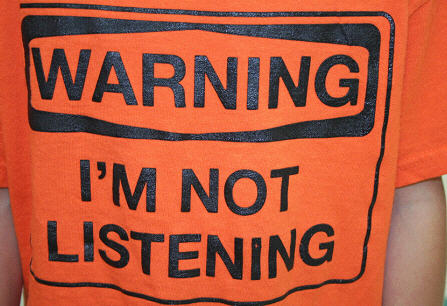 This week’s “Effective Executives” interview is with Janrain‘s VP of Marketing, Bill Piwonka. Bill’s background is firmly rooted in B2B marketing operations. Over the past 20 years he has led marketing teams and initiatives spanning strategy, product marketing, product management, demand generation, marketing communications and business development. Prior to joining Janrain, Bill was the vice president of marketing at EthicsPoint. He has also held marketing management positions at Centennial Software, Serena Software, MeasureCast, WebTrends, Intel and Oracle. Bill earned a Master of Business Administration from The Wharton School at the The University of Pennsylvania and a Bachelor of Arts in quantitative economics from Stanford University.
This week’s “Effective Executives” interview is with Janrain‘s VP of Marketing, Bill Piwonka. Bill’s background is firmly rooted in B2B marketing operations. Over the past 20 years he has led marketing teams and initiatives spanning strategy, product marketing, product management, demand generation, marketing communications and business development. Prior to joining Janrain, Bill was the vice president of marketing at EthicsPoint. He has also held marketing management positions at Centennial Software, Serena Software, MeasureCast, WebTrends, Intel and Oracle. Bill earned a Master of Business Administration from The Wharton School at the The University of Pennsylvania and a Bachelor of Arts in quantitative economics from Stanford University.
We caught up with Bill and asked him about his leadership style, how marketing has adapted to the changing economy and what is next for Janrain for the remainder of 2012.
Can you tell us a little bit about Janrain and your role?
Janrain is a leader in providing User Management solutions for the Social Web. You’ve probably encountered our technology many times without even realizing it. You have, if you’ve ever been offered the opportunity to login or register on a website using an existing identity from a social network such as Facebook, Google, Twitter, Yahoo!, LinkedIn, etc. - rather than fill out an onerous registration form. Not only does offering social login help business by increasing registration conversion rates, decreasing cart abandonment on eCommerce sites, improving data quality of the user database and reducing support costs from not having to respond to lost username/password requests, it also can significantly improve efficacy of marketing programs. That’s because when a user logs in using a social identity, the business has the opportunity to ask for access to a rich set of profile characteristics, such as interests (e.g. music, sports, movies…), location, friends, birthdays and more. This data can then be used to more finely segment customers and deliver richer online experiences and targeted promotions and offers.
At Janrain, I am responsible for overseeing our marketing efforts, including driving demand for our solutions, preparing our sales team for success and launching new products, services and solutions.
What kind of data do you use to make marketing decisions? Analytics apps, etc.?
We are very much a data-driven organization, even though we are still relatively small. As an organization, we use Salesforce.com for CRM, Act-On Software for Marketing Automation, and Google Analytics for web traffic. From these solutions, I monitor which campaigns are driving the highest quality leads, the health of our sales pipeline, our sales cycle length, average sales price, win/loss percentage, cost per lead, sales funnel conversion rates and a host of other metrics. I encourage my team to take risks and try new things, but I want to know if those efforts succeed or fail, and have a common barometer for making those assessments.
Favorite CMO-type media outlets you follow?
I actually don’t follow CMO-specific sites as much as I do Analysts (Altimeter Group, Forrester, Gartner, etc.), industry specific news (GigaOm, News.com) and general business sites and email groups (All Things D/WSJ, McKinsey, Wharton, Harvard Business Review, Marketwatch.com, etc.). I also try to follow interesting, insightful people on Twitter, where I get access to articles and research that they find compelling.
What do you see as your chief role? What’s your leadership style?
I see my role as setting direction and strategy and providing the tools and environment necessary for my team to succeed. I tend to be very collaborative, seeking input from both my team and peers within the company to help guide my thinking. I also am not a micro-manager. I want to hire the best and the brightest people I can find – even if they don’t have direct role-specific experience – and give them the freedom to deliver outstanding results. We set quarterly objectives that are tied to our overarching corporate goals, and identify how we will measure whether those objectives are met. Then I’m available to review progress, suggest approaches, edit written content, and roll up my sleeves to help when needed. But I want my team to feel empowered to do what it takes to be successful - not be afraid to take risks or make mistakes, and know that they are developing skills and experience that will help them progress in their own careers.
How has marketing changed with the economy’s twists and turns?
I don’t know that it really has. Of course I’m held to my budget and am always looking for ways to drive costs down while improving results, but that’s always been the case. And while technology has changed the way we can interact with our prospects and consumers, the fundamentals still hold. You need to have a product or solution that solves a specific pain point, communicate that message simply and elegantly and be the type of organization with which customers want to do business.
How much do you weigh social media in marketing goals?
Social media provides a great way to interact with customers, communicate your company’s personality, culture and values and developer higher brand advocacy and loyalty (when done right). All of those things are important to me; thus social media is an important part of our overall strategy.
If you had to make a pie chart of your marketing goals, how would you divide?
Ideally, it would be split into three equal wedges – Drive Demand, Enable Sales and Launch Products.
What is next for Janrain for the remainder of 2012?
The biggest challenge we have moving forward is managing our growth. We just about tripled in size in 2011, and are on a path for similar results in 2012. That has meant additional headcount, the implementation of appropriately scaled processes and a never ending list of deliverables to support this growth. It’s a really challenging environment, but one that is super fun – I can’t wait to see where we take it!

 nking about the little details? Once you win a customer or a client, are you welcoming them and thanking them for their business? Does your website make an interaction with your company pleasant and easy, or are you making prospects work too hard to become a customer? Can they easily find what they are looking for? Do you have a waiting room that’s comfortable or stark? Do you think about simple yet “nice touches” that would make a prospect want to do business with you over a similar competitor?
nking about the little details? Once you win a customer or a client, are you welcoming them and thanking them for their business? Does your website make an interaction with your company pleasant and easy, or are you making prospects work too hard to become a customer? Can they easily find what they are looking for? Do you have a waiting room that’s comfortable or stark? Do you think about simple yet “nice touches” that would make a prospect want to do business with you over a similar competitor?